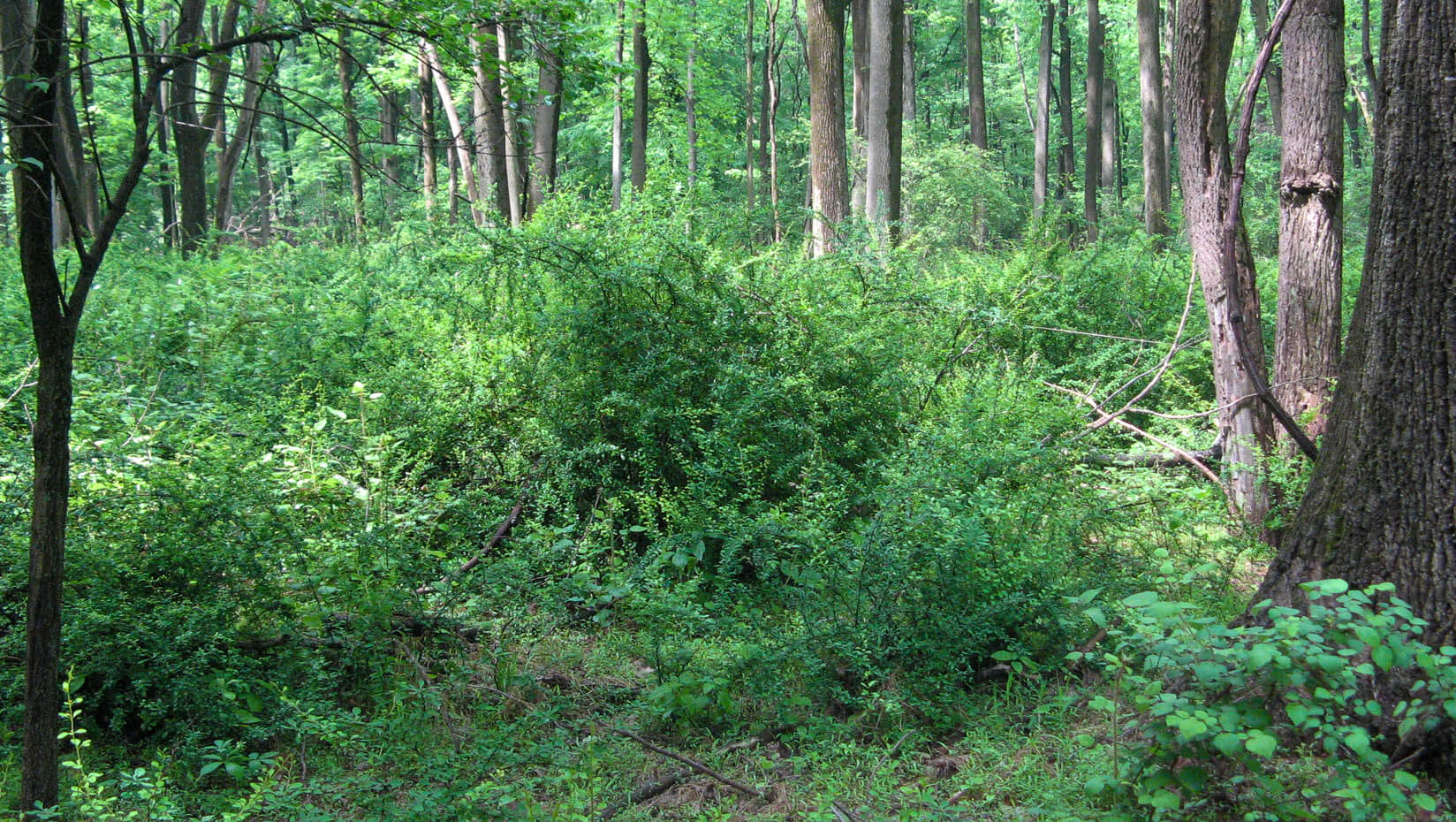
Miller, McGill study supports need for enhanced invasive plant management in national parks
Maintaining National Park infrastructure and built environments, such as roads, information kiosks and visitor centers, is a known and persistent challenge. But a new study led by Kathryn Miller, University of Maine alumna and quantitative ecologist for the National Park Services’ Northeast Temperate Network, suggests that undeveloped areas within national parks also require capital investments to protect their natural flora.
Since 2006 the National Park Service Inventory and Monitoring Program (NPS I&M) has been gathering forest health data from randomly located plots in more than 50 eastern national parks. The data collected in these plots are used to inform park management decisions. Miller, who earned her graduate degrees at UMaine, and Brian McGill, UMaine professor of ecological modeling, partnered with colleagues from the NPS in Maine, Pennsylvania, Vermont, Virginia and Washington, D.C. to characterize long-term invasive plant trends in 39 eastern national parks. The team analyzed data gathered over 12 years from 1,479 permanent NPS I&M sites to document the spread of invasive herbs, shrubs, vines and trees. Data from Maine’s only national park, Acadia (ANP), was included in this study.
Analysis of the data revealed that invasive species are widespread and increasing in the eastern national parks. The most common invasives, Japanese stiltgrass (Microstegium vimineum), multiflora rose (Rosa multiflora) and Japanese honeysuckle (Lonicera japonica), were found in 75% of the parks sampled. Garlic mustard (Alliaria petiolata) was identified in nearly all study sites. The researchers identified stiltgrass and invasive shrubs as the most urgent threats in eastern National Parks.
While the number of plots sampled in each park varied widely from four (Sagamore Hill National Historic Site) to 176 (ANP), invasive plants were found in 50% of plots in 39 parks. Ten parks had at least one invasive species in every plot. Parks with the highest invasive abundance are generally located in densely populated areas in and around Washington, D.C., Maryland, New York and Massachusetts. One or more invasive species were observed in only 5% of plots in ANP, making it the least invaded park in the study.
Invasion theory suggests that unmanaged invasive outbreaks reach a natural saturation point, and subsequently experience a decline. But findings from this study contradict that theory, predicting that untreated invasive outbreaks do not reach saturation and can serve as a source for continued propagation and spread to new areas.
The findings of this temporal study, conducted within a broad area of the U.S., suggest that allocating resources and committing to managing invasive plant communities in our national parks must be a priority.
Contact: Joan Perkins, joan.perkins@maine.edu
